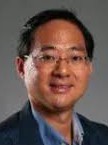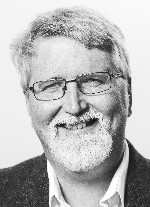Monday, 23 September 2019 |
09:00–09:45 (Kona Moku Ballroom)
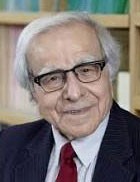
Cognitive Dynamic System for Cyber Physical Systems and Cybersecurity
Simon Haykin, Distinguished University Professor, McMaster University, Canada
The starting point of this talk is Cognitive Dynamic System (CDS), the ideas of which go back to 2006. However in today's new world, CDS consists of two major items:
- CDS-I, which simulates certain features of the brain.
- CDS-II, which goes deeper in the brain.
Under these two brief introductions, we now introduce the following statement:
The Principle of Predictive Adaptation is for new practical applications.
To elaborate, we will be focusing on the following pair of related but different topics, simply stated as follows:
- Cyber Physical Systems, which are internal.
- Cybersecurity, which is external.
As different as they are, they do nevertheless settle on the same end result:
Risk Sensitive Cognitive Action
Biography—Simon Haykin received his B.Sc. (First-class Honours), Ph.D., and D.Sc., all in Electrical Engineering from the University of Birmingham, England. He is a Fellow of the Royal Society of Canada, and a Fellow of the Institute of Electrical and Electronics Engineers. He is the recipient of the Henry Booker Gold Medal from URSI, 2002, the Honorary Degree of Doctor of Technical Sciences from ETH Zentrum, Zurich, Switzerland, 1999, and many other medals and prizes.
He is a pioneer in adaptive signal processing with emphasis on applications in radar and communications, an area of research that has occupied much of his professional life. In the mid-1980s, he shifted the thrust of his research effort in the direction of Neural Computation, which was re-emerging at that time. All along, he had the vision of revisiting the fields of radar and communications from a brand new perspective. That vision became a reality in the early years of this century with the publication of two seminal journal papers:
"Cognitive Radio: Brain-empowered Wireless communications", which appeared in IEEE J. Selected Areas in Communications, Feb. 2005.
"Cognitive Radar: A Way of the Future", which appeared in the IEEE J. Signal Processing, Feb. 2006.
Cognitive Radio and Cognitive Radar are two important parts of a much wider and integrative field: Cognitive Dynamic Systems, research into which has become his passion. His current research exploits the Principle of Predictive Adaptation to achieve the following objective:
Risk Sensitive Cognitive Action, the purpose of which is to control Cognitive Dynamic Systems as if the presence of uncertainties do not exist.
Contact: haykin@mcmaster.ca
09:45–10:30 (Kona Moku Ballroom)
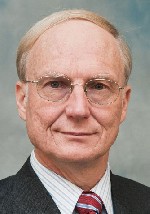
Vehicular Communications: C-V2X is Driving It Forward
Edward G. Tiedemann, Jr., Senior VP Engineering & Qualcomm Fellow, Qualcomm Technologies, USA
For many years, the automobile industry and multiple governments developed standards, conducted tests, and were planning to deploy V2X communications using IEEE 802.11p. 802.11p was chosen as the PHY and MAC layers for DSRC (Dedicated Short Range Communications) in the United States, and ITS G5 in Europe. In the two years since the completion of 3GPP Release 14 supporting cellular based vehicle-to-vehicle communications (C-V2V), the industry direction has been rapidly changing. Several factors, including the better performance of 3GPP Release 14, synergies with cellular radios already going into many automobiles, new energy, and timing, are leading to the choice of C-V2X and to its commercial deployment.
This keynote will provide the current status of V2X communications, including its readiness for commercialization, in multiple regions of the world. It will describe the performance benefits of C-V2X communications, the reuse of the upper layer protocols developed for DSRC and ITS-GS, and the various testing and certification programs. The presentation will conclude with a vision for future V2X communications and will describe the work now underway in 3GPP to bring a second generation of C-V2X communications based upon NR.
Biography—Dr. Edward G. Tiedemann, Jr. is a Qualcomm Fellow and a Senior Vice President of Engineering of Qualcomm Technologies, Inc. He leads Qualcomm’s worldwide standardization and industry organization activities. Dr. Tiedemann was instrumental in the design and development of the TIA/EIA/IS-95 CDMA system, also called cdmaOne™. He led Qualcomm and much of the industry’s efforts in the design and development of the third-generation cdma2000® system. Dr. Tiedemann holds over 200 US patents and has participated in many papers, conference lectures, and industry panels. He currently sits on the board of several industry organizations. He is interested in multiple topics in communications including 5G, IoT, and V2x.
Prior to becoming involved with terrestrial wireless communications, Dr. Tiedemann was involved with numerous commercial and military satellite systems. From 1977 to 1988, Dr. Tiedemann was at MIT Lincoln Laboratory, where he worked on mmWave satellite communications systems.
Dr. Tiedemann holds the Ph.D. degree from MIT where he worked in the areas of queueing theory and communications networks. He holds the Master of Science degree from Purdue University and a Bachelor of Science degree from Virginia Polytechnic Institute and State University (Va Tech).
Dr. Tiedemann is past chairman of the Advisory Board of the College of Engineering at Virginia Polytechnic Institute and State University (Va Tech). He currently sits on the Advisory Board of the Purdue University School of Electrical and Computer Engineering. Dr. Tiedemann was General Chair of GLOBECOM 2015. He is also a member of the Board of Overseers of the Peabody Essex Museum.
Tuesday, 24 September 2019 |
09:00–09:45 (Kona Moku Ballroom)
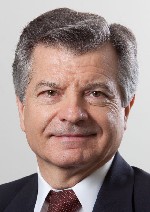
Delivering 5/6G Performance: MmWave Spectrum Opportunities and Challenges
Reinaldo A. Valenzuela, Director, Nokia Bell Labs, USA
The insatiable demand for media rich content and the increasing availability of advanced devices such as smart phones, tablets, etc., has forced the mobile communications eco system to consider the next generation solutions to address these needs. 5G, already in early commercial deployment, is responding to these needs with options such as Small Cells, HetNets, Carrier Aggregation, Internet-of-Things, Relays, Device-to-Device, massive MIMO and operation in the vast spectrum available in the millimeter wave range, among others. In this talk, I will review some of the opportunities and challenges inherent to these higher bands, such as increased propagation loss, maintaining antenna gain, beam spreading, channel dynamics and how they can be best addressed to deliver practical solutions to the challenges facing 5G and beyond.
Biography—Reinaldo A. Valenzuela: Member NAE. Fellow IEEE. IEEE Eric E. Sumner Award. Bell Labs Fellow. WWRF Fellow, 2014 IEEE CTTC Technical Achievement Award, 2015 IEEE VTS Avant Garde Award. B.Sc. U. of Chile, Ph.D. Imperial College. Director, Communication Theory Department, Distinguished Member of Technical Staff, Bell Laboratories. Engaged in propagation measurements and models, MIMO/space time systems achieving high capacities using transmit and receive antenna arrays, HetNets, small cells and next generation air interface techniques and architectures. He has published 210 papers and 44 patents. He has over 29,000 Google Scholar citations and is a 'Highly Cited Author' In Thomson ISI and a Fulbright Senior Specialist.
09:45–10:30 (Kona Moku Ballroom)
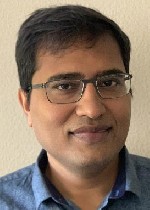
Cooperative Automated Driving: Overview, Design, and Technical Challenges
Gaurav Bansal, Principal Engineer, Airbus A3 Labs, USA
Connected Automated driving is an important emerging field and attendees would be able to gain technical and policy knowledge in this field by attending the talk. Background on vehicular safety communications and current deployments in various parts of the world will be provided. Vehicular communication will enable sensor data sharing between vehicles which could be the key for achieving higher levels of automation. Novel artificial intelligence techniques exploiting sensor data (camera, radar, GPS etc.) from neighboring cars can be used for designing perception and mapping functionalities for automated vehicles. Results demonstrating the advantages of connected automated driving will also be presented.
Biography—Gaurav Bansal is a Principal Engineer at the Airbus A3 Labs where he is currently leading initiatives in Artificial Intelligence to enable self-piloted aircraft operation and flying autonomous vehicles. Previously, Gaurav worked as a Principal Researcher at the Toyota InfoTechnology Center in Mountain View, CA, where he led several research efforts on the design of communication systems for Automated Driving. Gaurav is an expert in Vehicular Communications, pioneering contributions in Dedicated Short Range Communications (DSRC) congestion control and in innovative use-cases to leverage connectivity in vehicles. His research interests also include millimeter wave & full-duplex wireless communications. Gaurav represented Toyota in the Automakers’ Vehicle Safety Communication Consortium and in the SAE, ETSI standardization bodies. Gaurav's paper on DSRC Congestion Control received the Best Paper Award at the IEEE WiVEC Symposium. He also holds several patents in the field. Gaurav serves on the editorial board of IEEE Vehicular Technology Magazine and IEEE Connected Vehicles Initiative. Gaurav holds Electrical Engineering degrees from Indian Institute of Technology, Kanpur and The University of British Columbia.
Wednesday, 25 September 2019 |
09:00–09:05 (Kona Moku Ballroom)
Dr. Alvin Chin introduces the morning's plenary speakers: Jim Brown (CTO, CloudMade) and Onur Altintas (InfoLabs Fellow, Toyota InfoTech Labs USA)
Biography—Alvin Chin is Senior Researcher, Machine Learning at the BMW Technology Group, working on Big Data and Machine Learning for improving driving behavior and enabling intelligent driving. His current research involves studying user behavior in driving and in social networks, conducting data analytics of machine learning algorithms in BMW Connected, mining big data from the car data, and creating recommendations of items based on user profiling and context such as predicted destinations and trips, to provide intelligent user and car experiences.
09:05–09:35 (Kona Moku Ballroom)
The presentation will discuss a robust and resilient framework to enable the application of Machine Learning to Automotive vehicles, clouds and phone touch points with the consumer. The touch points may, or may not, include direct user interaction and the frameworks examined will span cloud only, vehicle/phone only and distributed models. The scope of the discussion will include the requirements, potential solutions and how to manage/minimize technical debt in their deployment and operation. Also covered will be examples of the application of machine learning and the role it plays in the use cases discussed.
Biography—Jim Brown, CloudMade’s CTO, has been working in the field of telecommunications, geo-spatial data, database/ERP and retail industries for over 25 years. He began his career in the early 1980s at General Motors / EDS where he deployed cell controllers for the Truck and Bus group and Kmart where he deployed the first distributed Unix systems into over 2,200 store locations and was responsible for international systems, R&D, and strategic planning at various times. He subsequently ran the technical architecture group at Oracle UK and was part of the founding team at Symbian.
Jim has spent most of this time on creating new products and building/running technical groups and consulting practices. At CloudMade this has included creating and driving the architecture of CloudMade’s products for distributed machine learning and the application of the same at different OEMs.
09:35–10:05 (Kona Moku Ballroom)
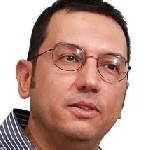
Communications Perspective in Vehicular Cooperation
Onur Altintas, InfoTech Labs Fellow, Toyota InfoTech Labs, USA
In this talk, we will look into V2X communications starting with the terminology and operational basics and delve into status updates from the aspects of standards, deployment and regional differences. We will next talk about connected vehicles and ‘automotive big data’ eco-system including entities in the cloud and vehicles as edges. We will show ways and examples of collaborative functions using V2X communications to extend the line of sight of sensors thus contributing to improve situational awareness, provide redundancy, and improve safety and mobility. From generic examples that require data and resource sharing, we will conclude with the need to explore millimeter wave communications, integrating radar and communications, using micro clouds and value anticipatory networking.
Biography—Dr. Onur Altintas is the InfoTech Labs Fellow at Toyota R&D InfoTech Labs in Mountain View, California. He has been with the Toyota group in various positions in New Jersey, Tokyo and California since 1999. He is the co-founder and general co-chair of the IEEE Vehicular Networking Conference (IEEE VNC) since 2009. He serves as an associate editor for IEEE ITS Magazine and IEEE Transactions on Intelligent Vehicles. He is an IEEE VTS Distinguished Speaker.
10:05–10:30 (Kona Moku Ballroom)


